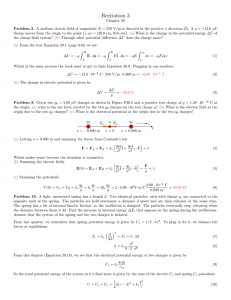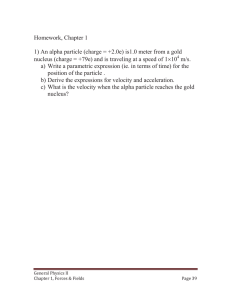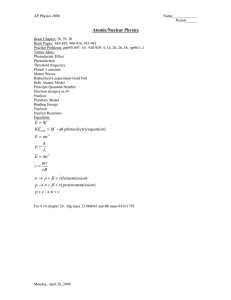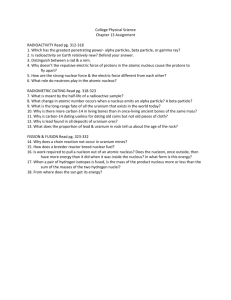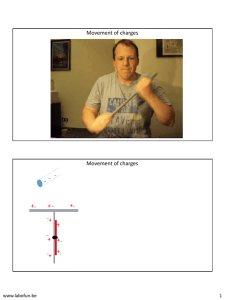Electric Potential and Electric Potential Energy Studio Physics I q
advertisement
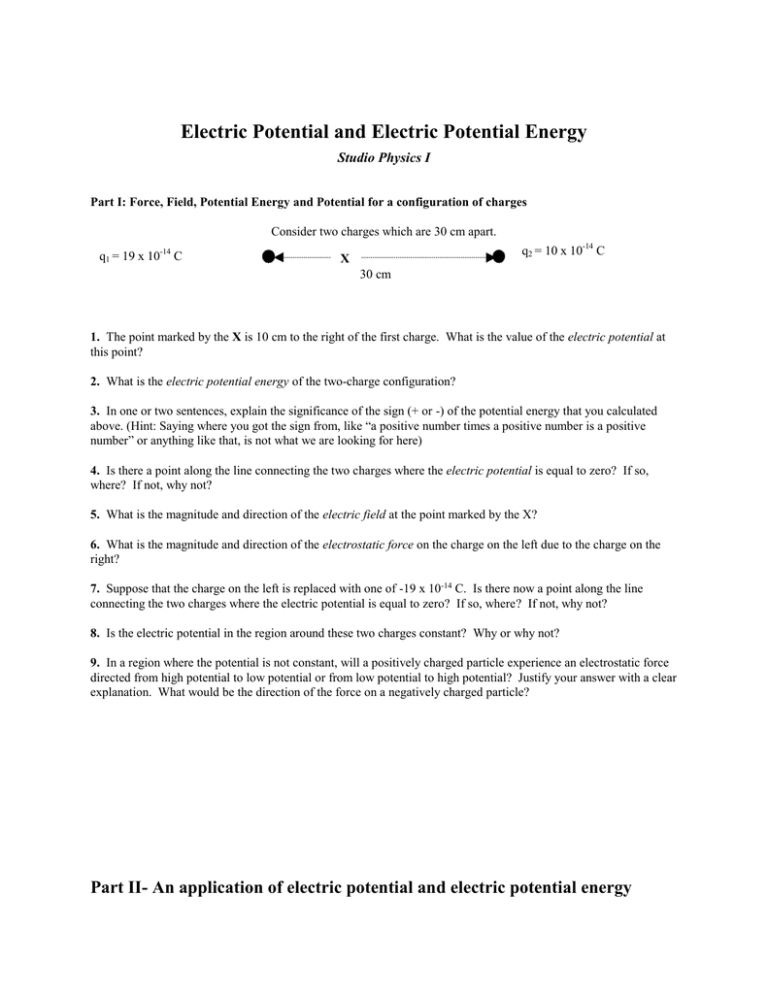
Electric Potential and Electric Potential Energy Studio Physics I Part I: Force, Field, Potential Energy and Potential for a configuration of charges Consider two charges which are 30 cm apart. q1 = 19 x 10-14 C q2 = 10 x 10-14 C X 30 cm 1. The point marked by the X is 10 cm to the right of the first charge. What is the value of the electric potential at this point? 2. What is the electric potential energy of the two-charge configuration? 3. In one or two sentences, explain the significance of the sign (+ or -) of the potential energy that you calculated above. (Hint: Saying where you got the sign from, like “a positive number times a positive number is a positive number” or anything like that, is not what we are looking for here) 4. Is there a point along the line connecting the two charges where the electric potential is equal to zero? If so, where? If not, why not? 5. What is the magnitude and direction of the electric field at the point marked by the X? 6. What is the magnitude and direction of the electrostatic force on the charge on the left due to the charge on the right? 7. Suppose that the charge on the left is replaced with one of -19 x 10-14 C. Is there now a point along the line connecting the two charges where the electric potential is equal to zero? If so, where? If not, why not? 8. Is the electric potential in the region around these two charges constant? Why or why not? 9. In a region where the potential is not constant, will a positively charged particle experience an electrostatic force directed from high potential to low potential or from low potential to high potential? Justify your answer with a clear explanation. What would be the direction of the force on a negatively charged particle? Part II- An application of electric potential and electric potential energy The diagram shows a stationary gold nucleus. The atomic number of gold is Z = 79 (so there are 79 protons in the nucleus) and its atomic weight is A = 197. The radius of the gold nucleus is R = 5.0 10-15 meters. 10. Write an expression for the electric potential due to the gold nucleus at a distance r (r > R) from the center of the nucleus. 11. An particle (Z = 2, A = 4), whose initial kinetic energy is 5.0 MeV (5.0 ×10 6 eV), is fired directly at the center of the gold nucleus from very far away. Use conservation of energy to find how close the particle will get to the center of the gold nucleus before it reverses direction. 1 eV=1.6 x 10-19 J
